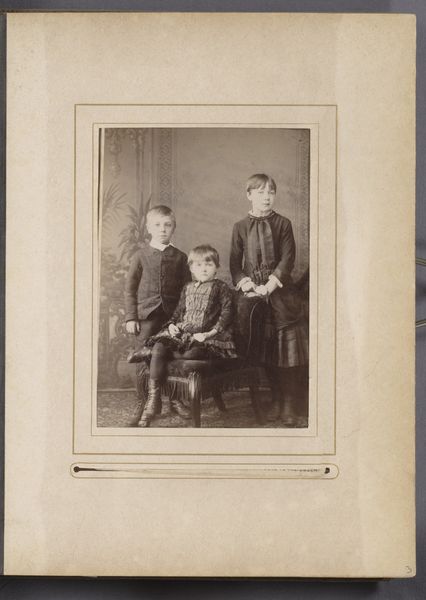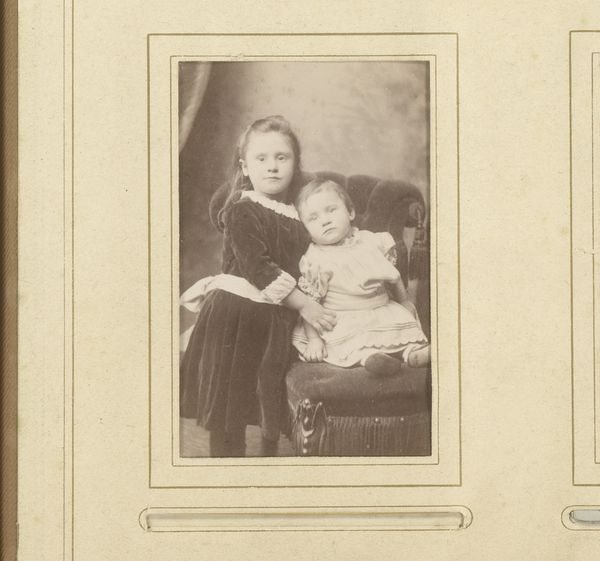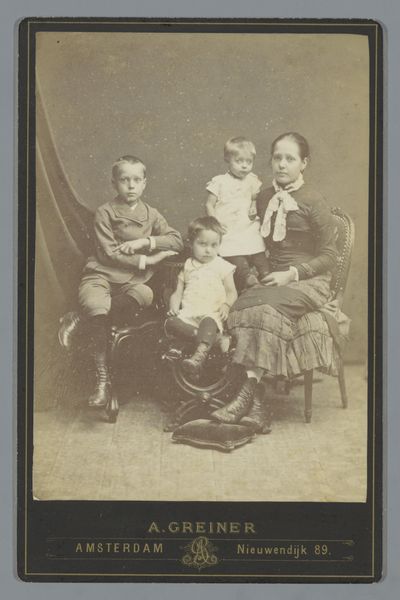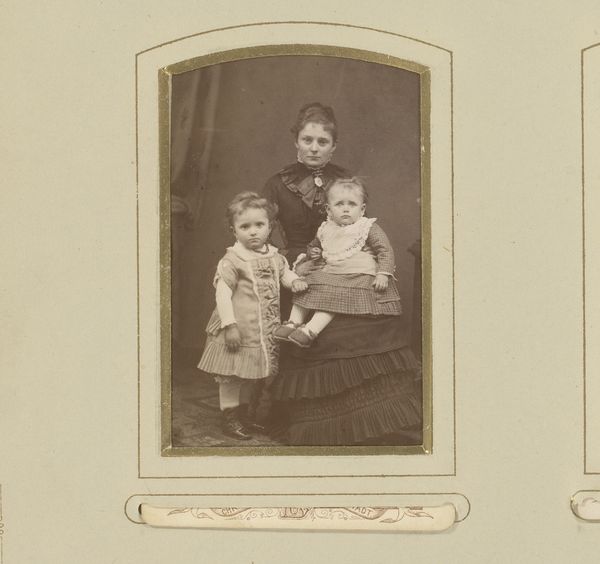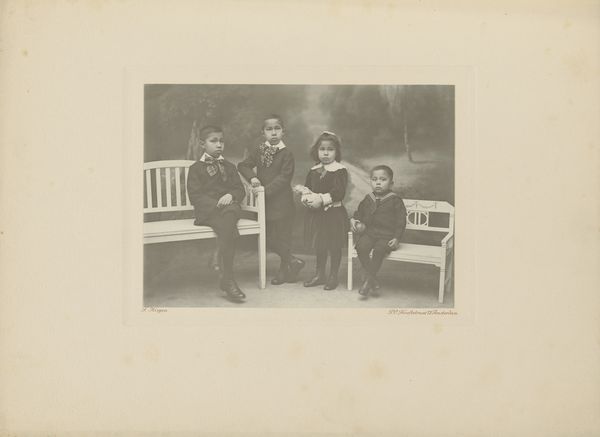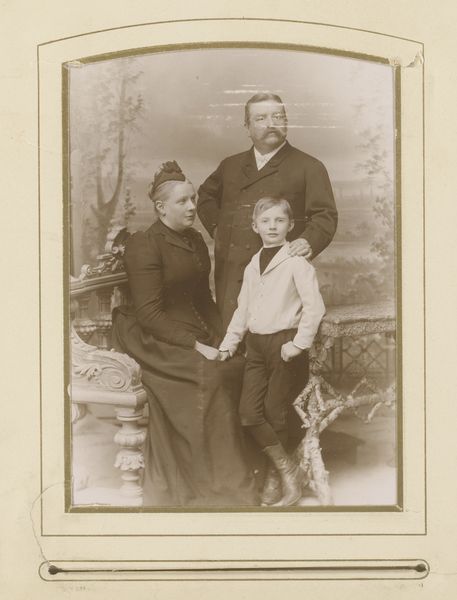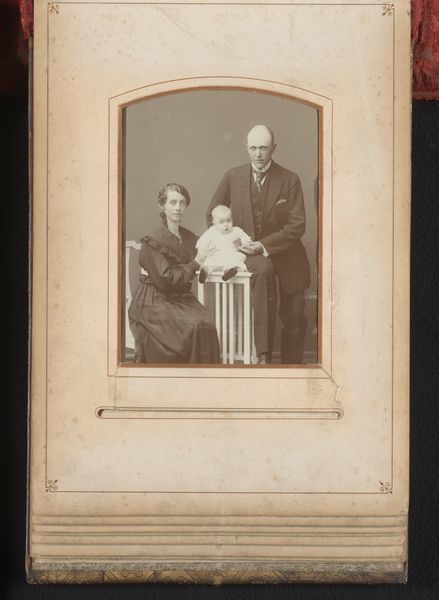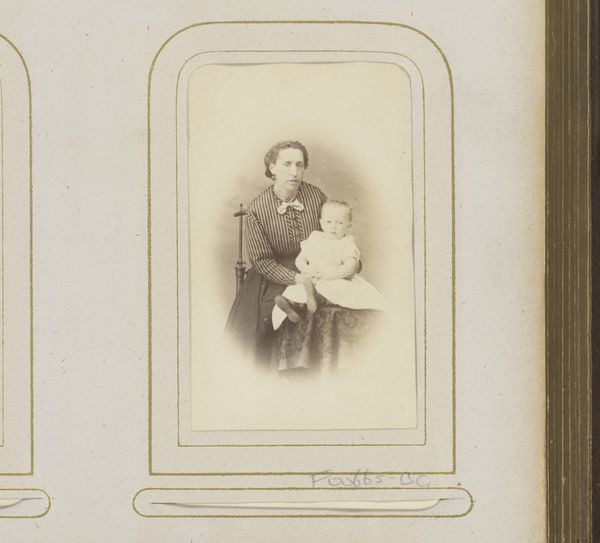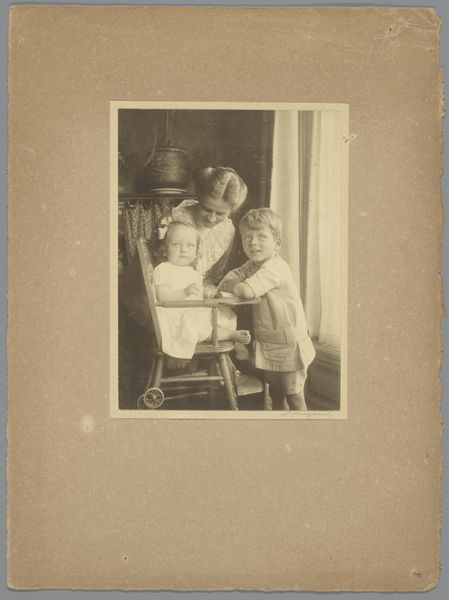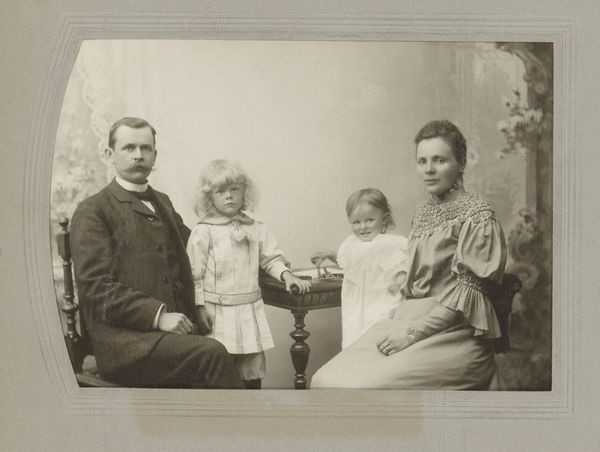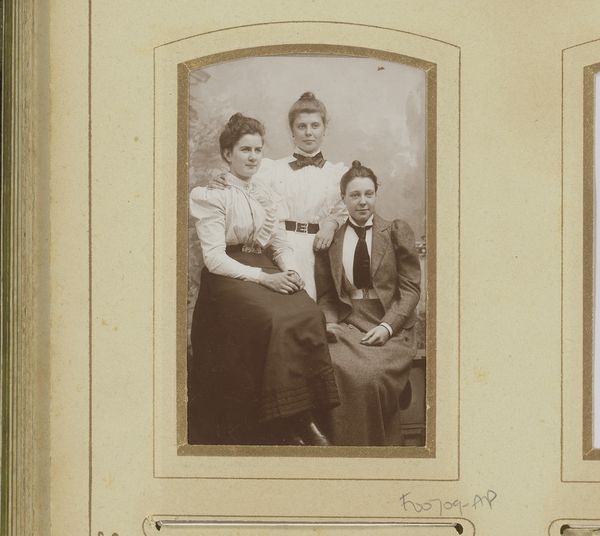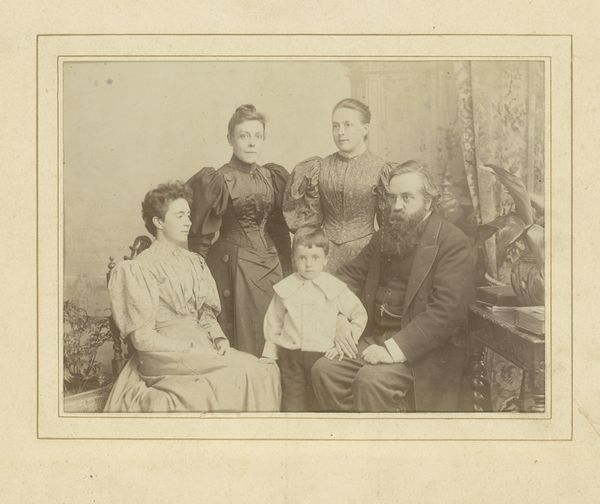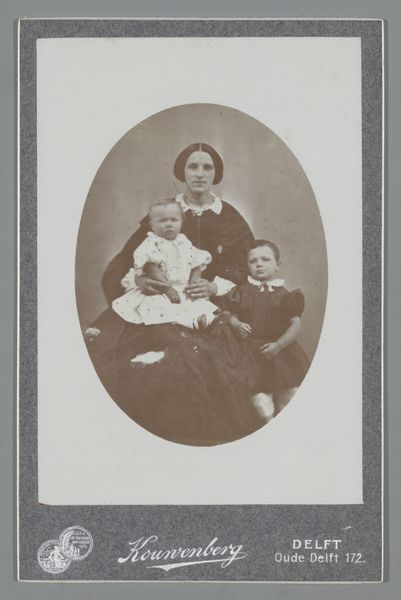
Portret van een zittende vrouw, een zittend kind en een staande man 1895 - 1920
0:00
0:00
photography
#
portrait
#
photography
Dimensions: height 83 mm, width 51 mm
Copyright: Rijks Museum: Open Domain
Editor: Here we have a photographic portrait, titled 'Portret van een zittende vrouw, een zittend kind en een staande man,' which translates to 'Portrait of a Seated Woman, a Seated Child, and a Standing Man.' It was created sometime between 1895 and 1920 by Maria Kallström. I find the composition so interesting, especially how each figure relates to the other in terms of visual space. What strikes you most about the way it is composed? Curator: It is undeniably compelling. Kallström's employment of light and shadow articulates a distinct spatial hierarchy. Note how the tonal range is carefully modulated; the background, a subtle gradation, effectively flattens the picture plane, while the figures emerge through sharper contrasts. This creates an almost sculptural relief. Editor: Yes, it’s as if they are emerging from the background. Do you think the flattening effect was intentional? Curator: Undoubtedly. Kallström clearly manipulates the formal elements to construct meaning. Observe the geometric rigor – the verticality of the man contrasts against the seated woman and child. Consider the semiotic potential here: is it a commentary on societal structure? Editor: Interesting! The contrast between the figures did not occur to me initially, but the use of verticality against the horizontal poses can definitely make us wonder about social and family structures from the late 19th and early 20th centuries. Thank you, that helped me understand it better. Curator: The picture prompts numerous lines of inquiry through careful examination of form. The relationships between these compositional choices offers a new path toward appreciation.
Comments
No comments
Be the first to comment and join the conversation on the ultimate creative platform.
